Frontliners: What sometimes happen behind the (news) scene
More persons of interest
Frontliners: What sometimes happen behind the (news) scene
JOVY TAGHOY GERODIAS
October 19, 2017
On the scene reporters descend, piecing together narratives for their audiences like clockwork. Except there is nothing regular at all about the job of reporting the news. Unfamiliar territory, jargon, security threats, disturbing vistas—here’s a behind-the-scenes look at the challenges news gatherers face.
John Paul “JP” V. Pepito

John Paul “JP” V. Pepito, 24, a BA Communication graduate of the Cebu Normal University, has worked for SunStar Superbalita [Cebu] since August 2014. He was awarded the Best in Live Reporting on Social Media Award at the 2016 SunStar In-House Awards.
In October 2014, JP wrote about a man, drunk from brandy, who allegedly raped a mixed-breed poodle in Barangay Cubacub, Mandaue City. Habal-habal drivers reportedly witnessed the rape. The dog’s owner confirmed his pet had been sexually abused. But during the police investigation, the suspect insisted he had had sex with a lady, not a dog. “Sosyal ang brandy, kay gipahimo niya nga babaye ang iro,” a police officer said. (“Brandy is amazing. It turned the dog into a lady.”) The story went viral on social media.
Most challenging for JP was the 2016 electoral campaign, where he made live videos for the Superbalita Cebu page during the presidentiables’ sorties in Cebu. He said Rodrigo Duterte’s campaign sorties were literally insane, and his supporters made it so.
But there’s a bigger challenge still. “The spread of fake news has become a major problem. It’s a challenge to all journalists how to fight it,” he said.
Astra Zina Dangcalan Logarta
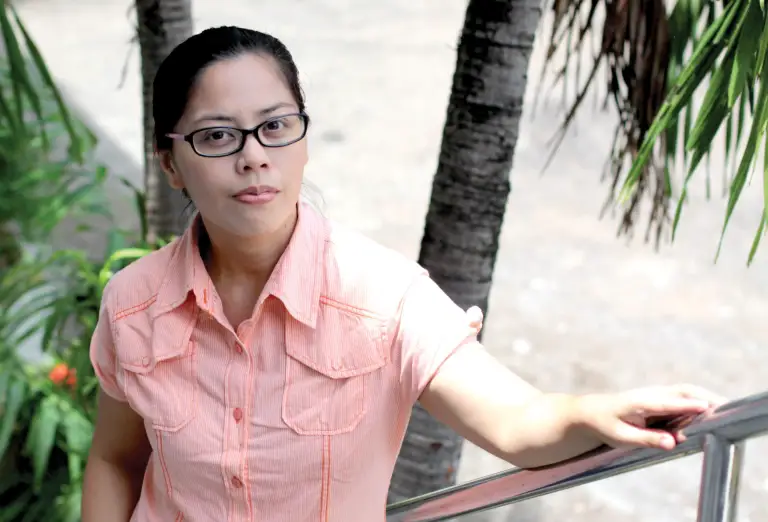
Astra Zina Dangcalan Logarta, 27, an AB mass communication cum laude graduate of the University of San Jose-Recoletos, has been with radio dyHP since January 2010. She has also been a correspondent/part-time reporter of CCTN 47 since June 2011 and a correspondent for SunStar SuperBalita [Cebu] since 2012. She was a Globe Media Excellence awardee in 2012 and 2013.
The suspension of former governor and now Rep. Gwendolyn Garcia in Dec. 12, 2012 marked the first time Astra did not spend Christmas and New Year at home with her family. Garcia did not leave her office at the Capitol until January 2013, so Astra had to deliver situationer reports, especially on how the governor spent her Christmas Eve and New Year’s Eve at the Capitol.
But her most challenging coverage was the special marine board inquiry on the sinking of the mv Thomas Aquinas in the sea off Talisay City on Aug. 16, 2013 because of the terms used that were new to her, and the retrieval operations of those who died in the sea mishap.
Alan Pacional Domingo
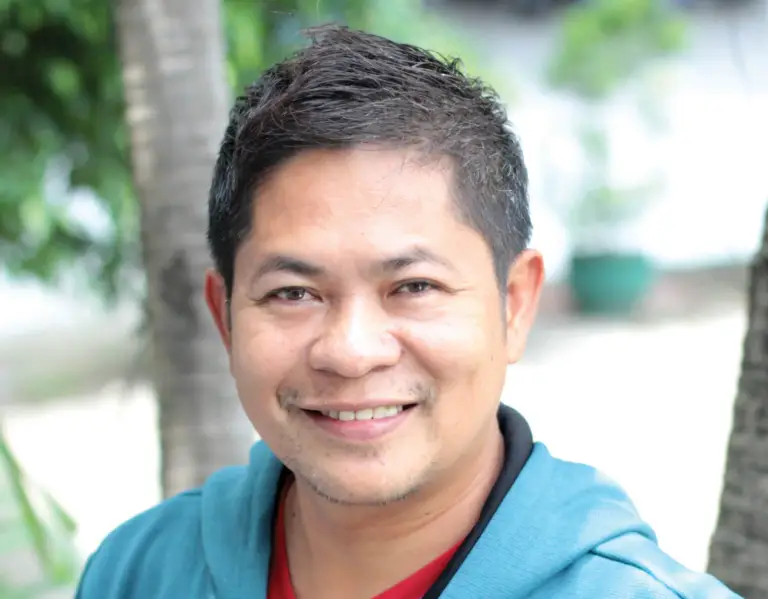
Alan Pacional Domingo, 42, an AB Mass Communication graduate of the University of San Jose-Recoletos, has worked for GMA Network (Regional TV) for 18 years, receiving back-to-back awards at the Globe Media Excellence Awards as Reporter of the Year for TV and Story of the Year for TV in 2012 (education) and in 2013 for his entry “AsinSuka”; and first place both in the feature news video and hard news video categories at the Justice Awards (International Justice Mission) in 2013.
In his 18 years as a journalist, he said he had never met anyone willing to share the stink in their lives until he met the Canadura couple involved in illegal drugs for years. On camera, they disclosed the physical, mental and emotional abuse they had committed against their three children who, in a separate room, cried while sharing their story. Alan and his cameramen wept also.
The lives of the children changed not by human Tokhang, but through divine intervention after they surrendered everything to God, Alan said, and the Canadura couple continues the healing process with the support of good Samaritans.
Alan says a journalist must use not only his head but also his heart to find the deeper stories and go beyond shallow reportage.
Ogherty “Herty” Lopez

Ogherty “Herty” Lopez, 24, a graduate of Bachelor in Mass Communication at the Cebu Institute of Technology University, was a call center agent for almost a year before he joined the Superbalita [Cebu] team.
In media for three years now, he was a Cebu Archdiocesan Mass Media Awardee for Best in Investigative Reporting in 2015. During Pope Francis’ visit to Tacloban in January 2015, Herty, with the rest of the SunStar team sent to cover the event, braved the typhoon that hit the city on the day of the Pope’s visit. After the pope’s mass at the Tacloban Airport for the survivors of 2013’s typhoon Yolanda, the SunStar team walked kilometers to go back to their hotel to write and submit their stories.
But the longer road is ahead. Herty said the mainstream media should work together to continue to deliver accurate and timely stories amid the threat of fake news/websites.
Le Phyllis F. Antojado

Le Phyllis F. Antojado, 24, an AB Mass Communication cum laude graduate from the University of San Jose-Recoletos, has been with radio dyLA since September 2013 and a correspondent of Banat News/The Freeman since February 2016.
The calamities in 2013—typhoon Yolanda and the 7.2-magnitude earthquake—that hit the Visayas, including Cebu, made Le realize that her job was not ordinary.
What makes media unique is that one can learn new things every day, even experience a little of what other professions do, she said, adding that one can learn how a disaster officer works today, and then learn some cases in court tomorrow. “You have to embrace that challenge every day for you to learn and become a better media practitioner.”
Johanna Marie O. Bajenting

Johanna Marie O. Bajenting, 21, a graduate of the University of San Jose-Recoletos, has been working for SunStar Cebu for one year and two months.
Her first year in the media industry was greeted by Abu Sayyaf terrorists infiltrating the province of Bohol, provoking a clash with the military. Her team had only the clothes in their backpacks. Sleep was out of the question, and they had to run to a thick jungle with other civilians when the Abu Sayyaf started targeting their hiding spot. The experience, however, strengthened Johanna’s faith in the soldiers and police on the front lines during conflict situations in the country.
“The biggest challenge that I see for journalism is how it can adapt to the changing times, especially when it comes to accountability and responsibility in social media for matters which involve everyone’s security,” she said.
Joworski Alipon
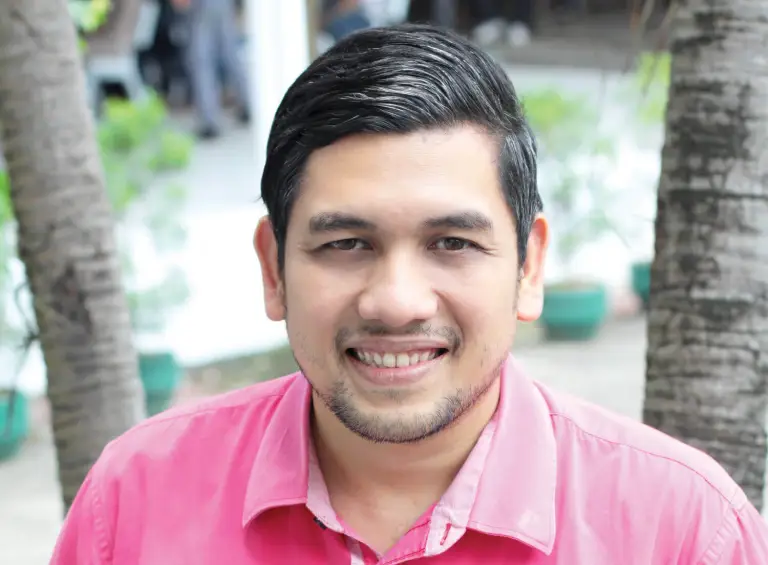
Joworski Alipon, 29, a mass communication graduate of the University of San Jose-Recoletos, has worked for ABS-CBN since 2010. On Nov. 9, 2013, a day after typhoon Yolanda hit, he flew to the devastated city of Tacloban.
“It was my birthday, but I never doubted that this call of duty would bring out the best lessons in life. I saw cadavers scattered everywhere. People wept. Some survivors, whose houses had been pulverized, sat in one corner of the street, with a (blank) look,” he said.
People approached his news team, some begging for help; others, in between sobs, handing to him pieces of paper with their relatives’ contact numbers.
Returning for a follow-up report, he stood in awe. “Structures had yet to rise again, but the resiliency of the survivors made me appreciate life more and the wonders of this thing called hope. I said to myself, I now have a story,” said Joworski.
The challenge for media practitioners is to get to the core of the story amid overwhelming information. After all, one may seek the facts, but what journalists really need to tell is the truth, he said.
Gregorio “Gregg” Monterde Rubio Jr.
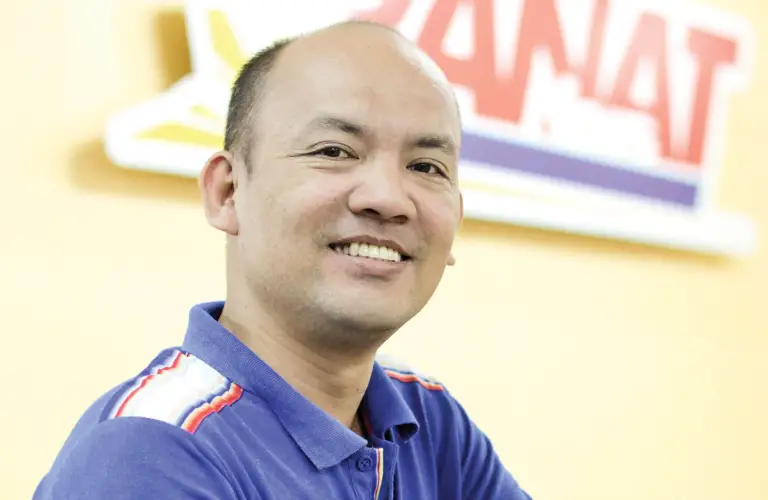
Gregorio “Gregg” Monterde Rubio Jr., 41, finished his Bachelor of Arts major in English studies at Cebu Normal University (CNU) in 1998.
His interest in journalism started when he became the Cebuano section editor of Ang Suga Publication of CNU (formerly Cebu State College). He joined a media volunteers group called Bantay Barangay of BantayRadyo, and later organized the school-based Bantay Barangay CSC Chapter, which produced two successful media practitioners and now editors of The Freeman, Johnrey Saavedra and Emmanuel Villaruel.
He became a reporter for Bantay Radyo in April 1998, news correspondent of Banat News in 1999 and The Freeman in 2000. In November 2001, Gregg was hired by Radio Mindanao Network-dyHP Cebu while he continued to work for The Freeman and Banat News.
He became a tourism and information officer of Daanbantayan, Cebu on July 1, 2007, but left in September 2010 to return to The Freeman as a full-time correspondent and later, staff reporter.
He has been president of the Capitol Association of Reporters in Tri-media since 2011, and vice president of the Cebu Federation of Beat Journalists in 2012 and since 2014. He began editing work in The Freeman in 2013 and months later in Banat News, with a plea to the manager, Bhoy Mendoza, that he be allowed to continue writing news.
“I love news writing, as I vow to die with my pen. But I also cannot say no to the growth of my position as an editor and the call for service to help uplift the lives of my fellow journalists, their families and the communities,” said Gregg, who is also a board member of the Cebu Newscoop.
Victor Anthony V. Silva
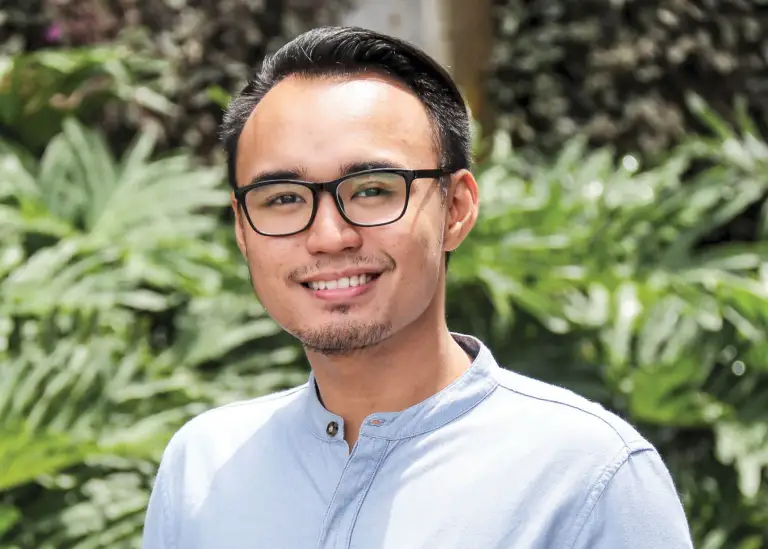
Victor Anthony V. Silva, 23, a mass communication graduate of the University of the Philippines Cebu, has been a reporter for Cebu Daily News since 2014. That year, typhoon Queenie hit Malabuyoc town. “Interviewing an eight-year-old boy who stared death in the face and hearing him recall his mother’s last words, ‘Mamatay na ko,’ was probably my most memorable coverage,” said Victor. The boy, Jason Baldado, survived the storm’s wrath, but his mother perished trying to save him.
With the proliferation of fake news and unreliable sources on social media, Victor said journalists must take a proactive role in educating the masses. “It’s not enough that we give them the truth through our stories. We also need to help them discern which are the blatant lies.”
Lou-anne Mae L. Rondina
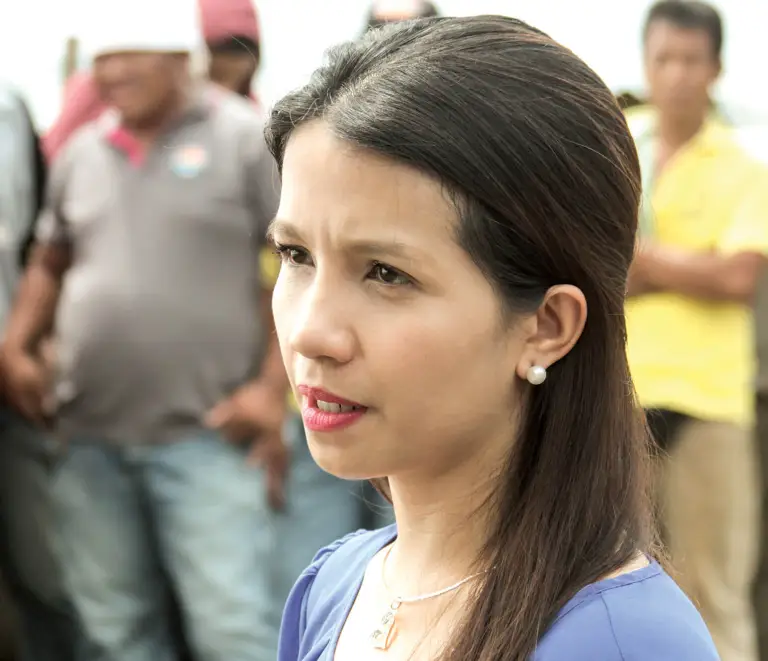
Lou-anne Mae L. Rondina, 36, a mass communication graduate of St. Theresa’s College, has been a Cebu news correspondent of GMA7 since September 2005. She hosted the now defunct “Isyu Karon Central Visayas,” a weekly magazine show of GMA7 Cebu, and was a news anchor of “Buena Mano Balita,” GMA7 Cebu’s morning show, for all its eight years.
One of her most challenging assignments was the arrival of the hundreds of dead bodies of the passengers of the capsized mv Princess of the Stars in Cebu in 2008.
“I had to endure the rancid smell and suck all that fear in because people were waiting for that crucial information, especially the relatives of the victims,” she said, adding that the good thing about being a journalist is the altruism and ability to narrate moving unadulterated stories of real and inspiring people.
Social media is one of the biggest challenges of mainstream media, she said, with many people unable to differentiate a credible news site from a satirical site.
Edwin Ian B. Melecio
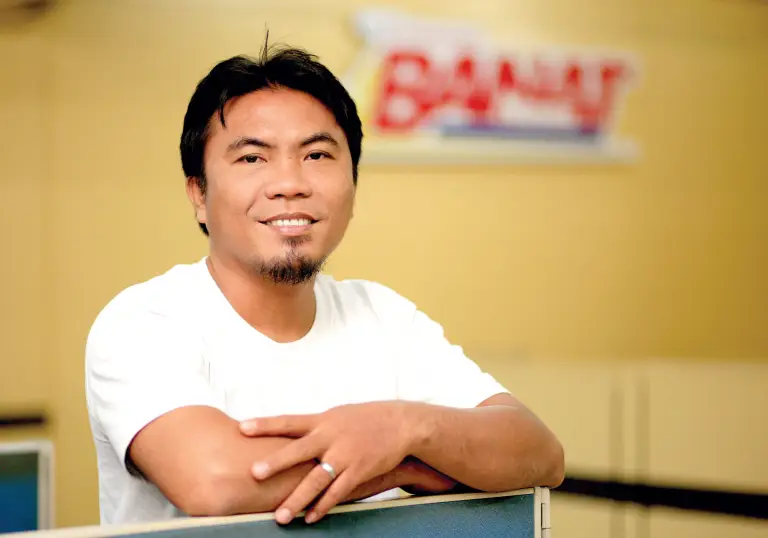
Edwin Ian B. Melecio, 40, was a third year political science student of the University of Cebu when his interest in photography led him to join The Freeman in 2001 as a correspondent-photojournalist. He started writing stories for both Banat News and The Freeman the following year. He later became senior reporter for Banat News, and now, Banat news editor.
During the mudslide in Barangay Guinsaugon in Saint Bernard town, Southern Leyte that killed more than 1,000 village folk in 2006, Edwin and his team stayed there for a week to keep Cebuano readers updated on the search and retrieval operation and how survivors were coping with the crisis.
He handed Banat News its first Cebu Archdiocesan Mass Media Awards for Best in News Stories in 2001 and Best in Investigative Reporting in 2007 with wins in these categories. Edwin sees the need for mainstream media to innovate to keep up with digital trends, considering that most people now prefer to get their news through social media.
Razel V. Cuizon

Razel V. Cuizon, 26, a mass communication graduate of the University of San Jose-Recoletos, has been a staff reporter of SunStar Cebu since 2013. Before joining SunStar, Razel was a field reporter and program anchor of dyRC Radyo Cebu from 2011 to 2014.
Whether on a rest day or out celebrating a town fiesta, Razel said, the call to deliver the news is something a reporter cannot say “no” to. She was at home on Aug. 16, 2013 when dyRC instructed her to cover a sea mishap in Lauis Ledge, Talisay City, and go on the air to deliver a situationer. For a month, Razel covered the search and rescue operations.
More than a month later, Razel had to put her day off aside again to cover the destruction caused by the 7.2-magnitude earthquake that brought her not only to different parts of Cebu but Bohol Province as well. Then typhoon Yolanda struck the Visayas in November. Razel was sent to Tacloban City to report on the destruction Yolanda had brought onto the city.
John M. Destacamento
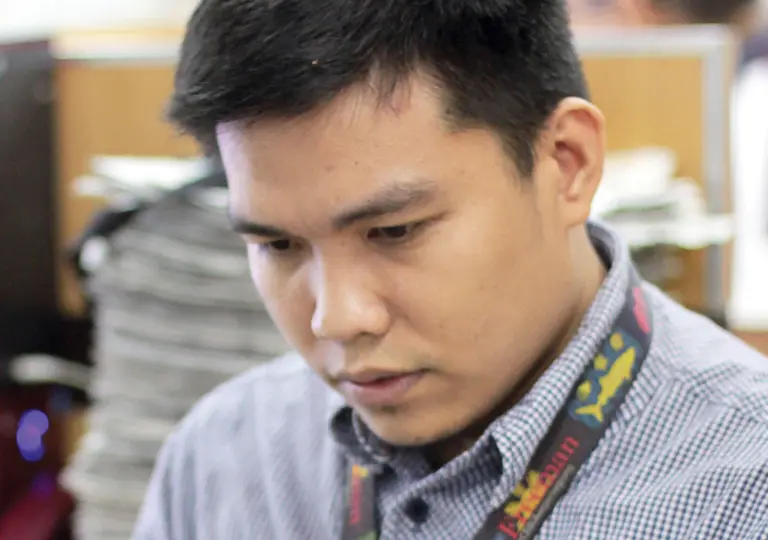
John M. Destacamento, 28, is a management accounting graduate of the University of San Carlos, but his passion for writing brought him to The Freeman five years ago. Starting as an assistant business editor and a reporter for the section in 2013, John was promoted to handle The Freeman’s Metro News section in 2014. He is now the assignments and day desk editor.
The launch of the yellow submarine in Cebu was unforgettable for John.
While other members of the media were having fun during the maiden voyage, “my hands were starting to feel clammy. I was sweating profusely, though it was very cold inside. My throat dried up. My head felt light. My body temperature rose,” prompting the Korean captain to heed his request to resurface the submarine. He felt sorry for his fellow media members.
For John, the most pressing issue Cebu media faces is the dearth of talent. Co-handling the internship program of The Freeman, he has observed that only a handful express interest in pursuing media work later on.
“We’re losing talented workers because the industry is not paying them well. As a matter of personal advocacy, I always tell students during lectures that journalism is not the place to go to become rich. That they need to have a huge arsenal of passion if they wish to practice media work.”
Rowena D. Capistrano

Rowena D. Capistrano, 35, has been in media for almost seven years. She is a field reporter and anchor of an evening program in radio dyRF Radyo Fuerza, and a correspondent for Banat News.
Rowena’s journey to the media industry started when she led a group of youngsters for a training under the Parish Journalist project of Archbishop Emeritus Ricardo Cardinal Vidal representing the Archdiocesan Shrine of San Roque. The training was held at the University of San Jose-Recoletos. Prior to the project, Rowena, better known as “Wang-Wang,” had received broadcast training from Fr. Dan Delos Angeles.
Wang-Wang’s dream came true when she secured an exclusive interview with Jeffrey “Jaguar” Diaz, believed to be one of the biggest drug traders in Central Visayas, days before he was gunned down by the authorities in 2016. Wang-Wang recalled Jaguar’s last words before they parted ways, “Sakto na ni. Nakapagawas na ko sa akong gibati nimo, ug bahala na sila unsa ilang hunahunaon nako. Salig ko nimo.” (I have laid my sentiments before you. Let them think whatever they want about me. I trust you.)
For Wang-Wang, the rivalry between genuine members of the media and those who are pretending to be journalists (“media-media”) is the challenge that needs to be addressed. She said journalists should continue serving the public by delivering the truth.
Jeffrey “Jepoy” Tumulak

Jeffrey “Jepoy” Tumulak, 49, finished his mechanical engineering course at the University of the Visayas.
Jepoy found his love in broadcasting when he had his engineering practicum with the Nation Broadcasting Corp. (NBC) where he volunteered to cover the 1991 deadly flash flood in Ormoc City. On Oct. 16, 1992, he became a field reporter of Bombo Radyo Philippines Cebu. On Feb. 24, 1997, he moved to RGMA dySS radio, where he now handles a morning show program, Pamukaw, from 4 to 5 a.m. and an afternoon entertainment radio program from 4 to 6 p.m.
On the field, he will never forget the time an allegedly “drunk” cop hit him with a piece of wood. He filed an administrative case, which ended five years later with the police officer getting suspended from the service.
“A true broadcaster must get information from legitimate sources,” which would be useful to listeners,” said Jepoy who, apart from being a broadcaster, is also a sports enthusiast and a funeral parlor owner.
Kristine Boticario Quintas

Kristine Boticario Quintas, 24, a mass communications graduate from the University of San Jose-Recoletos, was a radio reporter for dyLA in March 2013. Six months later, she became a full-time reporter for The Freeman, then copy editor earlier this year.
She won the top prize in the audio category (hard news) during the 2013 Justice Award for reporting on human trafficking of the Pecojon and International Justice Mission. The Freeman also named her Enterprising Reporter of the Year in 2016.
Covering the collision of a passenger vessel and tanker off Talisay City in 2013 was tough for Kristine. Delivering situationers before daybreak, she saw familiar faces among survivors bathed in blood or covered in grease. Many were her friends, schoolmates, relatives and acquaintances from her hometown in Surigao del Norte. Hundreds survived, but not her father’s second degree cousin and niece.
Interviewing survivors in Cebu City’s funeral homes, Kristine fought to keep her emotions in check amid the pile of cadavers, stench of the dead, and wailing of grieving families. Looking ahead, she said with Facebook and other social media providing new paths for journalism, the modern audience doesn’t work hard to find the news anymore. So journalists must write, report and market their stories more effectively and interestingly; create a presence on the Internet; and work harder to transform the business of providing news and information.
Jose Santino S. Bunachita

Jose Santino S. Bunachita, 24, a mass communication graduate of the University of the Philippines Cebu, has been working for Cebu Daily News since 2012. He placed second in the feature category of the 2013 Justice Awards.
The year 2013 saw rookie reporters like Santino hone their skills by covering three major tragedies that year–a ship collision, the 7.2-magnitude earthquake, and super typhoon Yolanda.
A native of Bohol, Santino said it was heartbreaking to make a feature story on the destruction caused by the earthquake that destroyed the province’s old and beautiful churches, especially the Our Lady of Assumption Shrine in Dauis, where he comes from.
Santino said, “It’s always either so easy or very difficult to deal with stories that hit closest to home. And it’s a challenge for all journalists across platforms and even amid the changes brought by technology.” 

